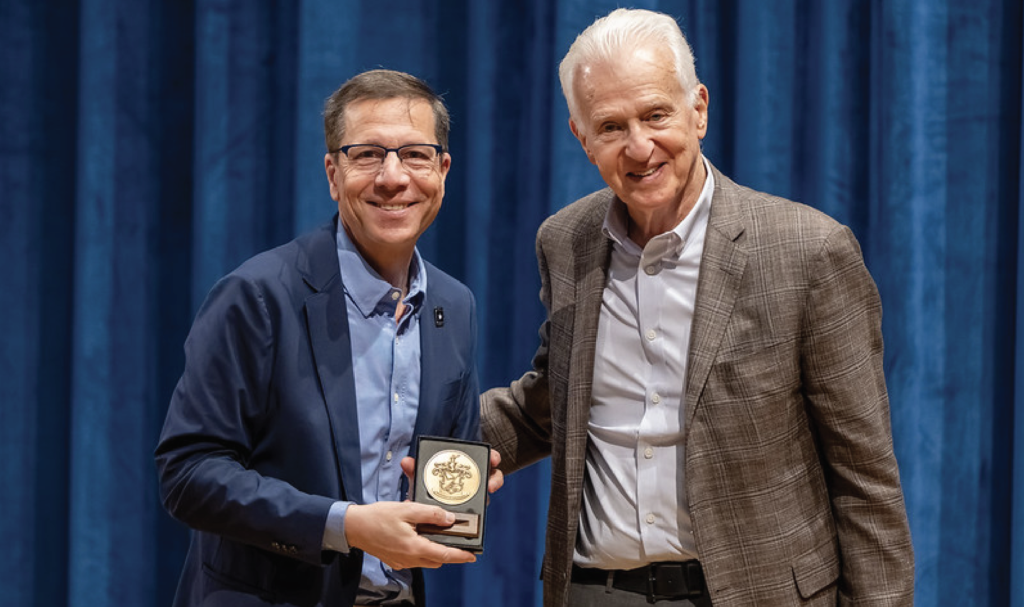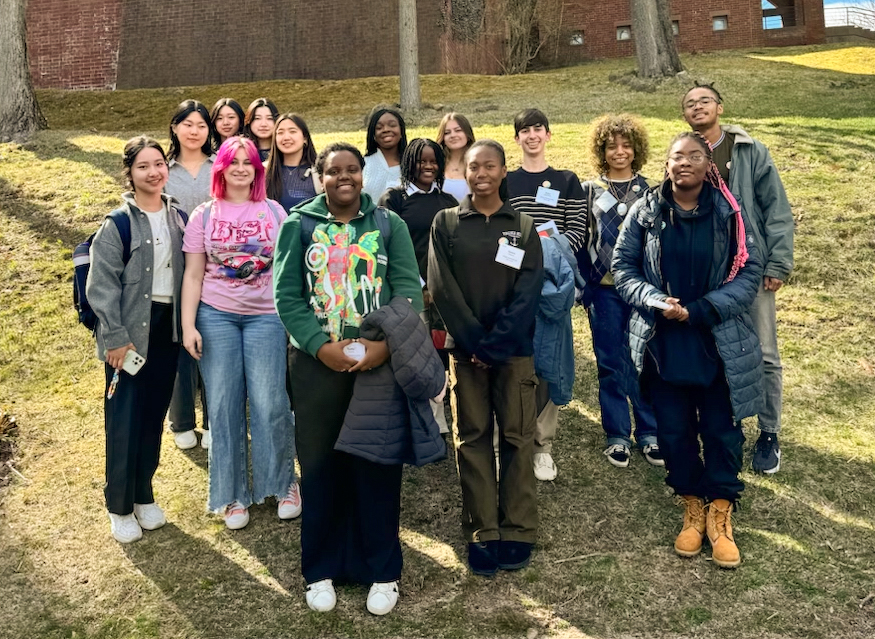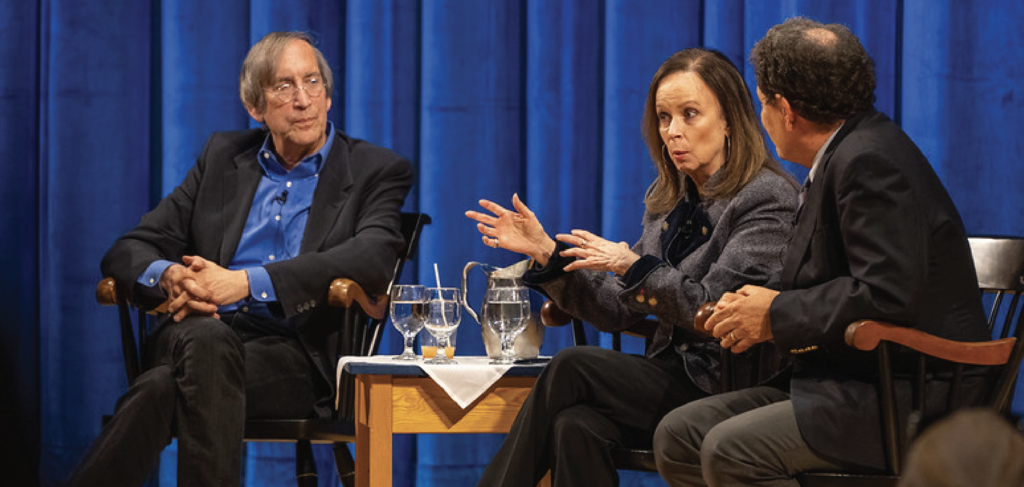
(Left to right) Lucas Ferrer ’17, Zoe Reid ’17, and Anslem Kizza-Besigye ’17 continued the divestment work of seniors last year.
Last Thursday, Lucas Ferrer ’17, Zoe Reid ’17, and Anselm Kizza-Besigye ’17 presented in front of the Board of Trustees Investment Committee, knowing that no student divestment movements at peer schools have succeeded yet. At their nearly hour-long presentation, the three seniors asked the committee to commit to halt future investments in fossil fuels and slowly phase out existing investments. Currently, 10% of Choate’s $350 million endowment is invested in fossil fuels, which is about $30 million. The Choate divestment movement started last spring, culminating in this meeting.
According to Reid, “I think the committee was pretty impressed. I don’t think they were expecting us to come out with a reasonable argument. I think they were expecting eco-warriors, like people coming at them with the climate change side of it, but we only touched upon that part because we didn’t want to lecture them. Our whole presentation was focused on the values of Choate, our sustainability commitment which promises a future of sustainability for Choate, and how we have the Kohler Environment Center (KEC), and how investing in fossil fuels is completely contradictory. We talked about why we came to Choate, because it’s a school that acts on its values, so we want to make sure it follows through with that.”
Mr. Jason Raiti, the Chief Investment Officer, commented, “I thought the divestment presentation was a great meeting. The students were amazing, very articulate, well prepared, and had clearly put a lot of thought into what they were going to say and how to respond to questions from the trustees. The trustees asked great questions, and there was a really good conversation about divesting. It went really well from my perspective: good conversation, good discussion, and a lot of really good thought.”
According to Reid, the committee was primarily concerned with the extent of the impact of divesting.
Reid added, “This meeting isn’t the end of it. We knew going into it that it wasn’t going to be one meeting. I think it’s going to take a while; we have to first meet with the entire Board of Trustees. But I think that the fact that we’ve been listened to means that there is an interest in divesting, and that action will be taken.”
When asked how Choate would go about divesting, Mr. Raiti said, “There are so many ways that you could divest, and different steps you would have to take for each way. It’s a great question and one that ultimately the trustees will have to answer. The investment committee would not set this policy; rather, it would be the broader group of trustees if we were to divest. And if they said we were going to divest, they would have to make a series of decisions below that in terms of exactly what will divesting mean.” He continued, ““The students had a great grasp of how the model works here, and the difficulty in that we don’t own these fossil fuel assets directly. So to get rid of the assets you’d have to sell the funds that we’re invested in. Or change the way the endowment invests totally. Divesting completely is difficult in that nature because we don’t actually control what the managers are picking for us.”
Divesting from fossil fuels is more complicated than it may seem. Choate does not invest in fossil fuels by directly buying stock in major energy companies. Rather, the endowment is invested by some thirty financial managers appointed by the Investment Committee. These managers invest their portions of the endowment into different stocks, mutual funds, and private equities. Almost all of these financial managers have some money invested in fossil fuels, as many mutual funds hold stock in fossil fuel companies.
Many of these mutual funds require a long-term commitment, which means the investment must be held for around ten to fifteen years. Thus, if Choate decides to divest, the financial managers must slowly phase out any investments in fossil fuels.
In the weeks since the new school year began, Ferrer, Reid, and Kizza-Besigye worked on the presentation to the committee. According to Reid, “We had a lot of help. We did a practice presentation with Dr. Curtis, and Ms. Homan gave us a lot of the facts on what Choate is already doing for sustainability, such as Green Cup. She also helped us present, spending two hours with us in Ruutz Rees as we rehearsed.”
The divestment movement began last year with a group of ten seniors. One of the leaders, Christopher Moeckel ’16, said, “In the spring of my senior year, we found that 10% of the Choate endowment was invested in fossil fuels. We thought that it was pretty disingenuous that Choate built the KEC, emphasized their sustainability initiatives, and then turned around and essentially bankrolled climate change.”
After learning this, the ten students created a twenty-point plan, which stipulated meetings with different administrators, plans for a petition, and a school-wide protest. The petition was a success, garnering 300-400 signatures the first night. However, the protest never took place because, according to Moeckel, “We met with Dr. Curtis and he was very receptive to the idea of divestment, so we scratched the protest.”
Moeckel reflected on the future of the divestment movement, remarking, “I think what it’s going to come down to is if Choate can retain high returns on their investments,while divesting. It’s a matter of money – if Choate can continue to sustain the growth endowment has experienced over the past decade while investing in more socially responsible funds.”




